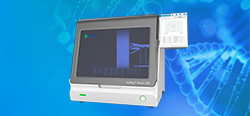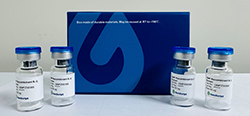首頁
- 試劑服務(wù)
-
產(chǎn)品
-
- AmMag? Quatro 1300全自動蛋白/抗體磁珠純化系統(tǒng)New!
- CytoSinct? 1000 細胞分選儀 & 管路Hot!
- AmMag? Quatro 1100全自動小型磁珠純化系統(tǒng)Hot!
- AmMag? Quatro 1400全自動多功能磁珠純化系統(tǒng)
- eBlot? 快速濕轉(zhuǎn)儀Hot!
- eStain? L1蛋白染色儀
- eZwest? 全自動蛋白印跡系統(tǒng)
- GenBox? 電泳槽
- 電泳儀電源
- AmMag? Quatro 1400 全自動多功能磁珠純化系統(tǒng)Hot!
- AmMag? Quatro 1100 全自動多功能小型磁珠純化系統(tǒng)Hot!
- AmMag? Quatro 1300 全自動蛋白/抗體磁珠純化系統(tǒng)New!
- 親和純化磁珠
- 內(nèi)毒素檢測與去除
- AmMag? Quatro 1300全自動蛋白/抗體磁珠純化系統(tǒng)New!
- StrepCaptureXP Resin FF即將上市!
- 親和層析介質(zhì)
- 親和純化磁珠
- His標(biāo)簽蛋白純化
- 抗體純化
- 內(nèi)毒素去除&檢測
- DYKDDDDK標(biāo)簽蛋白純化
- 耐堿Protien A 磁珠
- SurePAGE? 蛋白預(yù)制膠Hot!
- YoungPAGE? 蛋白預(yù)制膠New!
- eBlot? 快速濕轉(zhuǎn)儀Hot!
- eStain? L1蛋白染色儀Hot!
- eZwest? 全自動蛋白印跡系統(tǒng)
- 蛋白Marker
- GenBox? 電泳槽
- 電泳儀電源New!
- GMP級別細胞分選和激活Hot!
- CytoSinct? 細胞分選磁珠
- Enceed? 細胞激活試劑Hot!
- CytoSinct? 分選柱 & 磁力架Hot!
- CytoSinct? 1000 細胞分選儀 & 管路
- 標(biāo)簽抗體Hot!
- Anti-VHH AntibodyHot!
- Anti-scFv AntibodyHot!
- 抗獨特型抗體Hot!
- Anti-AAV抗體
- Anti-CD抗體
- Anti-Payload抗體Hot!
- 一抗
- 二抗
- 藥物代謝試劑盒
- 病毒載體質(zhì)控試劑盒
- -- 慢病毒滴度p24試劑盒Hot!
- -- MuLV滴度p30檢測試劑盒New!
- -- AAV滴度衣殼蛋白ELISA試劑盒
- 工藝殘留質(zhì)控試劑盒
- -- BSA ELISA試劑盒
- -- Cas9 ELISA試劑盒New!
- -- 蛋白A ELISA試劑盒New!
- -- His標(biāo)簽蛋白檢測&純化
- -- dsRNA ELISA試劑盒New!
- 應(yīng)用領(lǐng)域
- 活動&資源
-
關(guān)于我們
- 登錄 用戶中心 退出
- 注冊




































